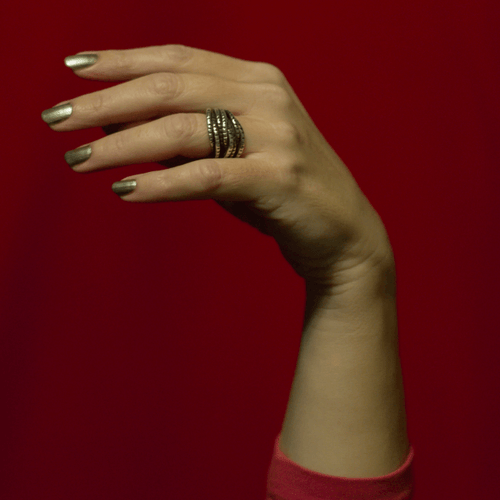The Science Behind UV-Cured Gel Nail Products
In the world of nail care, UV-cured gel nail products have become increasingly popular due to their durability and long-lasting shine. But have you ever wondered how these gel polishes and builder gels transform from a liquid to a solid state? In this blog post, we'll explore the fascinating process of polymerization that occurs when UV-cured gel nail products are applied.
Understanding Polymerization
Polymerization is a chemical process in which small molecules, called monomers, join together to form long chains, known as polymers. In the case of UV-cured gel nail products, the monomers are liquid substances that, when exposed to ultraviolet (UV) light, undergo a rapid polymerization process, transforming into a solid, durable material.
The Role of UV Light
UV light plays a crucial role in the polymerization process of UV-cured gel nail products. The UV light activates photoinitiators, which are added to the gel formula. When the photoinitiators absorb the UV light, they become energized and start a chain reaction that causes the monomers to link together, forming polymers.
Bi-weekly nail appointments that use UV nail lamps are generally considered safe, especially with more focused and energy efficient options like LED lamps that utilize more Violet light wavelengths. The level of UV radiation emitted by these lamps is relatively low, and exposure time is normally short, less than 5-10 minutes per service.
How Gel Polishes Polymerize
When a nail technician applies gel polish to your nails, they start with a base coat, followed by the gel polish color of your choice. Each layer of gel polish is applied thinly to ensure even curing. After each layer is applied, the nails are placed under a UV lamp, which emits UV light.
As the UV light shines on the gel polish, the photoinitiators in the formula absorb the light energy, causing them to break apart into free radicals. These free radicals then react with the monomers in the gel polish, triggering them to link together and form long polymer chains. This process, known as cross-linking, results in the hardening of the gel polish and creates a strong, durable coating on your nails.
How Builder Gels Polymerize
Builder gels, on the other hand, are used to add strength and structure to the nails. They are applied in layers and can be used to build up the nail to the desired thickness. Similar to gel polish, builder gels also contain photoinitiators that react to UV light to initiate the polymerization process. As the UV light shines on the builder gel, the photoinitiators in the formula begin the cross-linking process, transforming the gel into a solid, durable material.
Advantages of UV-Cured Gel Nail Products
UV-cured gel nail products offer several advantages over traditional nail polishes. They dry quickly under the UV lamp, reducing the risk of smudging or smearing. Additionally, UV-cured gel nails tend to last longer than traditional manicures, often staying chip-free for weeks.
Furthermore, UV-cured gel nail products are highly versatile, allowing nail technicians to create intricate designs and nail art that would be challenging to achieve with traditional polishes.
In Conclusion
The polymerization process of UV-cured gel nail products is a fascinating chemical reaction that transforms liquid monomers into solid, durable polymers. By understanding how this process works, you can appreciate the science behind your beautiful, long-lasting gel manicure.
Understanding Polymerization
Polymerization is a chemical process in which small molecules, called monomers, join together to form long chains, known as polymers. In the case of UV-cured gel nail products, the monomers are liquid substances that, when exposed to ultraviolet (UV) light, undergo a rapid polymerization process, transforming into a solid, durable material.
The Role of UV Light
UV light plays a crucial role in the polymerization process of UV-cured gel nail products. The UV light activates photoinitiators, which are added to the gel formula. When the photoinitiators absorb the UV light, they become energized and start a chain reaction that causes the monomers to link together, forming polymers.
Bi-weekly nail appointments that use UV nail lamps are generally considered safe, especially with more focused and energy efficient options like LED lamps that utilize more Violet light wavelengths. The level of UV radiation emitted by these lamps is relatively low, and exposure time is normally short, less than 5-10 minutes per service.
How Gel Polishes Polymerize
When a nail technician applies gel polish to your nails, they start with a base coat, followed by the gel polish color of your choice. Each layer of gel polish is applied thinly to ensure even curing. After each layer is applied, the nails are placed under a UV lamp, which emits UV light.
As the UV light shines on the gel polish, the photoinitiators in the formula absorb the light energy, causing them to break apart into free radicals. These free radicals then react with the monomers in the gel polish, triggering them to link together and form long polymer chains. This process, known as cross-linking, results in the hardening of the gel polish and creates a strong, durable coating on your nails.
How Builder Gels Polymerize
Builder gels, on the other hand, are used to add strength and structure to the nails. They are applied in layers and can be used to build up the nail to the desired thickness. Similar to gel polish, builder gels also contain photoinitiators that react to UV light to initiate the polymerization process. As the UV light shines on the builder gel, the photoinitiators in the formula begin the cross-linking process, transforming the gel into a solid, durable material.
Advantages of UV-Cured Gel Nail Products
UV-cured gel nail products offer several advantages over traditional nail polishes. They dry quickly under the UV lamp, reducing the risk of smudging or smearing. Additionally, UV-cured gel nails tend to last longer than traditional manicures, often staying chip-free for weeks.
Furthermore, UV-cured gel nail products are highly versatile, allowing nail technicians to create intricate designs and nail art that would be challenging to achieve with traditional polishes.
In Conclusion
The polymerization process of UV-cured gel nail products is a fascinating chemical reaction that transforms liquid monomers into solid, durable polymers. By understanding how this process works, you can appreciate the science behind your beautiful, long-lasting gel manicure.
THE NAIL HUB
Quality in Nail Care
At The Nail Hub we take product quality and education seriously.
Join our education community at thenailhub.tv.











